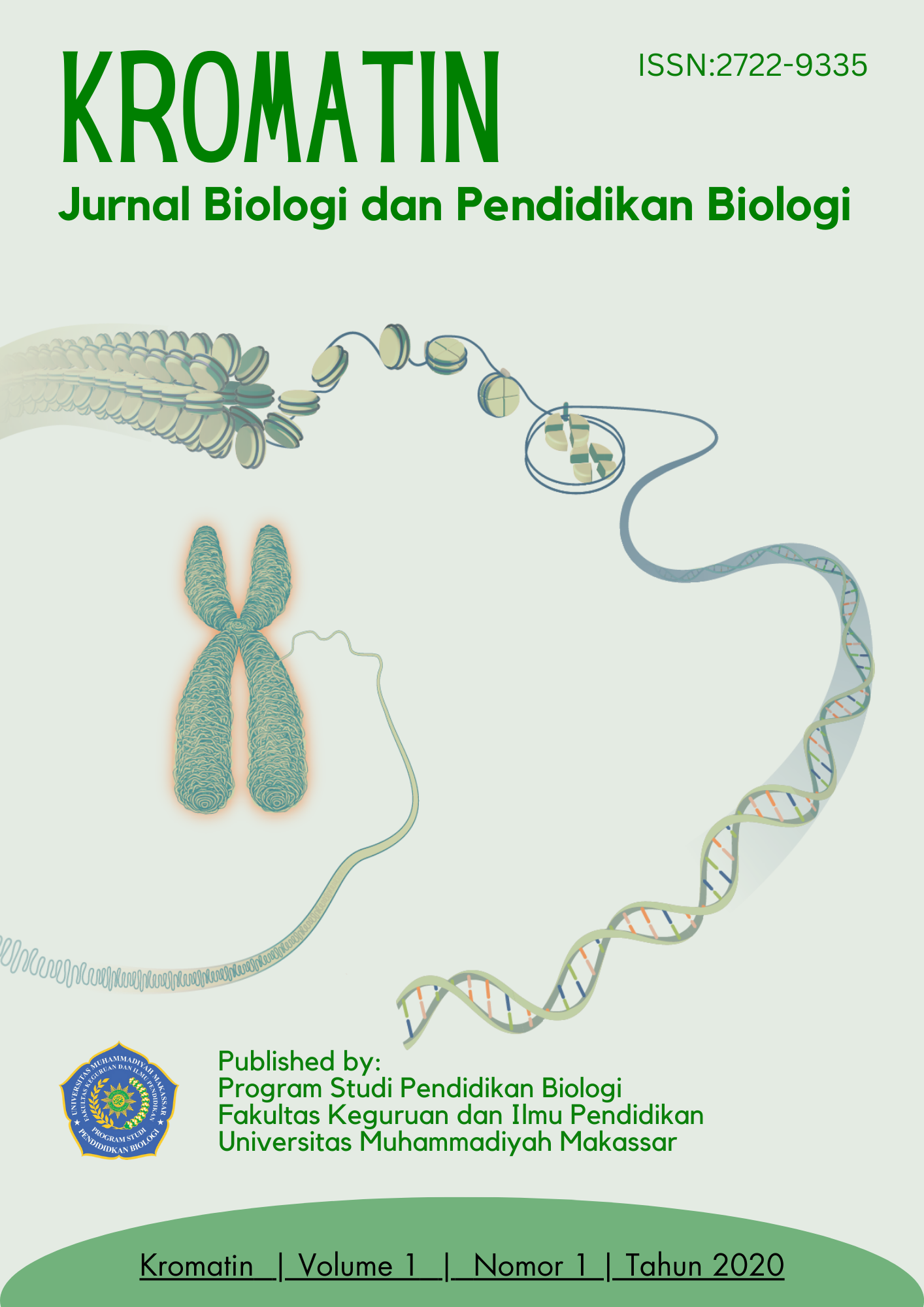Peningkatan hasil belajar biologi siswa melalui penggunaan kartu indeks
Abstract
This research is a classroom action research (Classroom Action research) which aims to improve learning activities and improve student learning outcomes through the use of index cards in biology learning. The subjects of this study were eighth grade students of SMP Negeri 1 Turatea, Kab. Jeneponto even semester of the academic year 2008/2009, amounting to 34 students. The implementation of this research consisted of two cycles and the data collected were analyzed using qualitative and quantitative analysis. Student activity data were analyzed in a descriptive qualitative manner and data on learning outcomes were analyzed quantitatively. The results of this study indicate that the application of learning strategies using index cards is an effective learning strategy to improve the activities and learning outcomes of students of class VIII SMP Negeri 1 Turatea Kab. Jeneponto. The increase was shown by the results of research from cycle I to cycle II, namely (1) the average value of student learning outcomes increased from 68.62 to 76.66 in both categories and an increase in the percentage of students who completed from 64.71% to 88, 24%. (2) student activities show improvement in listening to teacher explanations, asking and answering questions, group collaboration and working on worksheets, submitting responses / comments to other groups when presenting the results of student collaboration. Based on the results of the study, it was concluded that an increase in activity and learning outcomes of the eighth grade students of SMP Negeri 1 Turatea, Jeneponto Regency. Keywords: Index Card, Learning OutcomesReferences
Arikunto. 2007. Dasar-Dasar Evaluasi Pendidikan Edisi Revisi. Bumi Aksara. Jakarta.
Arsyad, A. 2007. Media Pembelajaran. PT. Raja Grafindo Persada. Jakarta.
Mulyasa. 2006. Kurikulum yang Disempurnakan, Pengembangan Standar Kompetensi Dasar. Remaja Rosdakarya. Bandung.
Downloads
Published
Issue
Section
License
Authors who publish with this journal agree to the following terms:
1. Authors retain copyright and grant the journal right of first publication with the work simultaneously licensed under a Creative Commons Attribution 4.0 Internasional License that allows others to share the work with an acknowledgement of the work's authorship and initial publication in this journal.
2. Authors are able to enter into separate, additional contractual arrangements for the non-exclusive distribution of the journal's published version of the work (e.g., post it to an institutional repository or publish it in a book), with an acknowledgement of its initial publication in this journal.
3. Authors are permitted and encouraged to post their work online (e.g., in institutional repositories or on their website) prior to and during the submission process, as it can lead to productive exchanges, as well as earlier and greater citation of published work.
Licence:
Authors are free to:
1. Share: Copy and redistribute the material in any medium or format
2. Adapt: Remix, transform, and build upon the material for any purpose, even commercially.
The licensor cannot revoke these freedoms as long as the authors follow the license terms, which include the following:
1. Attribution: Authors must give appropriate credit, provide a link to the license, and indicate if changes were made. Authors may do so in any reasonable manner, but not in any way that suggests the licensor endorses the authors or authors’ use.
2. No additional restrictions: Authors may not apply legal terms or technological measures that legally restrict others from doing anything the license permits.
This work is licensed under a licensed under a Creative Commons Attribution 4.0 Internasional License/ CC BY 4.0.


